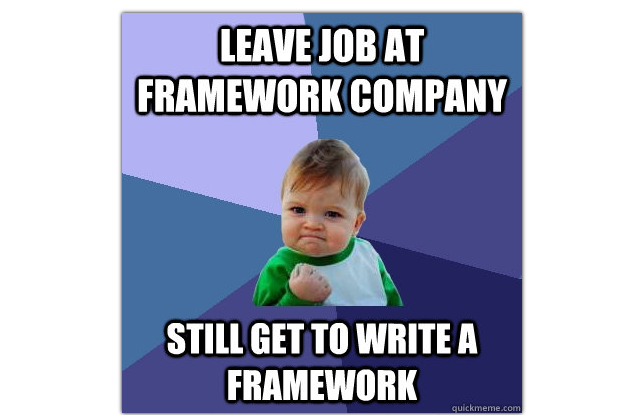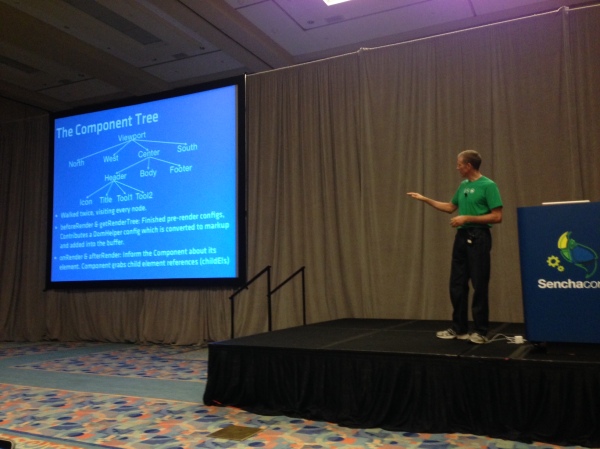It's been a while since I've written about SenchaCon, with the last posts on this tag going back over a decade. Reflecting on these past articles brings back the vibrant energy of those conferences and the technical advancements shared there. From the highlights of the largest SenchaCon event in my 2013 Wrapup, to gathering insights from Nige "Animal" White's talk on Ext JS performance, it was a time rich with learning and sharing.
The technical sessions like Fastbook demonstrated the power of HTML5 in mobile apps, while the first day's recap of Sencha Con 2013 showcased the evolution and maturity of the Sencha frameworks. I also took the opportunity to connect with fellow developers, inviting them for informal chats over a beer in Sencha Con Attendees: I Need You. These posts provide a glimpse into the robust community and the technical passions that drove the SenchaCon events.
Sencha Con 2013 Wrapup
So another great Sencha Con is over, and I'm left to reflect on everything that went on over the last few days. This time was easily the biggest and best Sencha Con that I've been to, with 800 people in attendance and a very high bar set by the speakers. The organization was excellent, the location fun (even if the bars don't open until 5pm...), and the enthusiasm palpable.
I've made a few posts over the last few days so won't repeat the content here - if you want to see what else happened check these out too:
What I will do though is repeat my invitation to take a look at what we're doing with JavaScript at C3 Energy. I wrote up a quick post about it yesterday and would love to hear from you - whether you're at Sencha Con or not.
Now on to some general thoughts.
Content
There was a large range in the technical difficulty of the content, with perhaps a slightly stronger skew up the difficulty chain compared to previous events. This is a good thing, though there's probably still room for more advanced content. Having been there before though, I know how hard it is to pitch that right so that everyone enjoys and gets value of out it.
Sencha Con Attendees: I Need You
Love working with Sencha frameworks? Want to come work with me on the next generation? I moved on to C3 Energy about a year ago, where we are busily building the operating system for the largest machine ever conceived by humans - the Smart Grid.
The Smart Grid is an amazing concept that's being rolled out right now. C3 Energy is the only company in existence that addresses the full stack of Smart Grid architecture - from generation through transmission and end-user consumption.
But what's that got to do with JavaScript? Well, my team gets to work on building the UI that powers everything that happens on the smart grid. We have some unique requirements that have led us to write our own beautiful little framework, optimized for end-user performance and developer productivity. Naturally, this leaves me feeling like this:
We're a small (70 person) company of exceptionally talented people. We have a staggeringly successful collection of people both on the board and as the executive team.
We'd like to attract more people like us, and the Sencha community is the perfect place to look - especially given how much the framework has been inspired by what I helped create at Sencha.
Sencha Con 2013: Ext JS Performance tips
Just as with Jacky's session, I didn't plan on making a separate post about this, but again the content was so good and I ended up taking so many notes that it also warrants its own space. To save myself from early carpal tunnel syndrome I'm going to leave this one in more of a bullet point format.
Ext JS has been getting more flexible with each release. You can do many more things with it these days than you used to be able to, but there has been a performance cost associated with that. In many cases this performance degradation is down to the way the framework is being used, as opposed to a fundamental problem with the framework itself.
There's a whole bunch of things that you can do to dramatically speed up the performance of an app you're not happy with, and Nige "Animal" White took us through them this morning. Here's what I was able to write down in time:
Slow things
Nige identified three of the top causes of sluggish apps, which we'll go through one by one:
- Network latency
- JS execution
- Layout activity
Sencha Con 2013: Fastbook
I didn't plan on writing a post purely on Fastbook, but Jacky's presentation just now was so good I felt it needed one. If you haven't seen Fastbook yet, it is Sencha's answer to the (over reported) comments by Zuckerburg that using HTML5 for Facebook's mobile app was a mistake.
After those comments there was a lot of debate around whether HTML5 is ready for the big time. Plenty of opinions were thrown around, but not all based on evidence. Jacky was curious about why Facebook's old app was so slow, and wondered if he could use the same technologies to achieve a much better result. To say he was successful would be a spectacular understatement - Fastbook absolutely flies.
Performance can be hard to describe in words, so Sencha released this video that demonstrates the HTML5 Fastbook app against the new native Facebook apps. As you can see, not only is the HTML5 version at least as fast and fluid as the native versions, in several cases it's actually significantly better (especially on Android).
Sencha Con 2013 Day 1
Sencha Con 2013 kicked off today, with some stunning improvements demoed across the product set. I'm attending as an audience member for the first time so thought I'd share how things look from the cheap seats.
Keynote
The keynote was very well put together, with none of the AV issues that plagued us last year (maybe they seemed worse from behind the curtain!). It started off with a welcome from Paul Kopacki, followed by some insights into the current status of developers in the world of business (apparently we're kingmakers - who knew!). One of Blackberry's evangelists came up and made a pretty good pitch for giving them a second look (the free hardware probably helped a little...)
The meat, though, was in the second half of the presentation. We were treated to a succession of great new features across Ext JS, Sencha Touch and Sencha Architect, which I'll go into in a little more detail below.
But it was Abe Elias and Jacky Nguyen who stole the show in the end. Unleashing a visionary new product, Sencha Space, they demonstrated a brand new way to enable businesses to elegantly solve the problem of BYOD (Bring Your Own Device).
Introduction to Ext JS 4
At the end of last 2010 we capped off an incredible year with SenchaCon - by far the biggest gathering of Sencha developers ever assembled. We descended on San Francisco, 500 strong, and spent an amazing few days sharing the awesome new stuff we're working on, learning from each other, and addressing the web's most pressing problems.
Now, we're proud to release all of the videos from the conference completely free for everyone. You can see a full list on our conference site, where you'll find days worth of material all about Ext JS 4, Sencha Touch and all of the other treats we're working on at the moment.
Some of the videos in particular stand out for me - Jamie's Charting and Layouts talks were spectacular, as was Rob's Theming Ext JS 4 talk. On the Touch side, Tommy's talks on Performance and Debugging are required viewing, as is Dave Kaneda's characteristically off the cuff Theming talk.
My personal high point was standing in front of all of you and introducing Ext JS 4 and its three core goals - speed, stability and ease of use. I think you're going to love what we've done with the framework in version 4.


